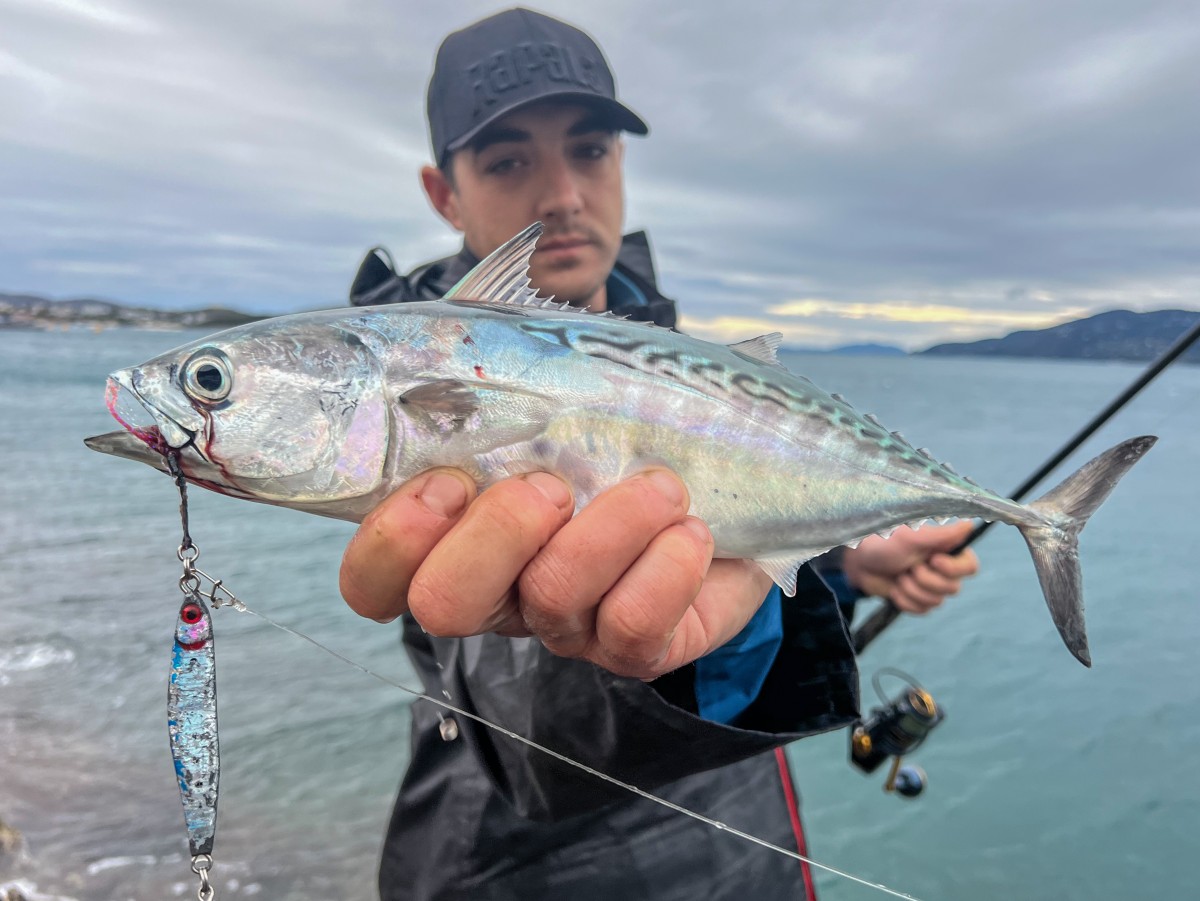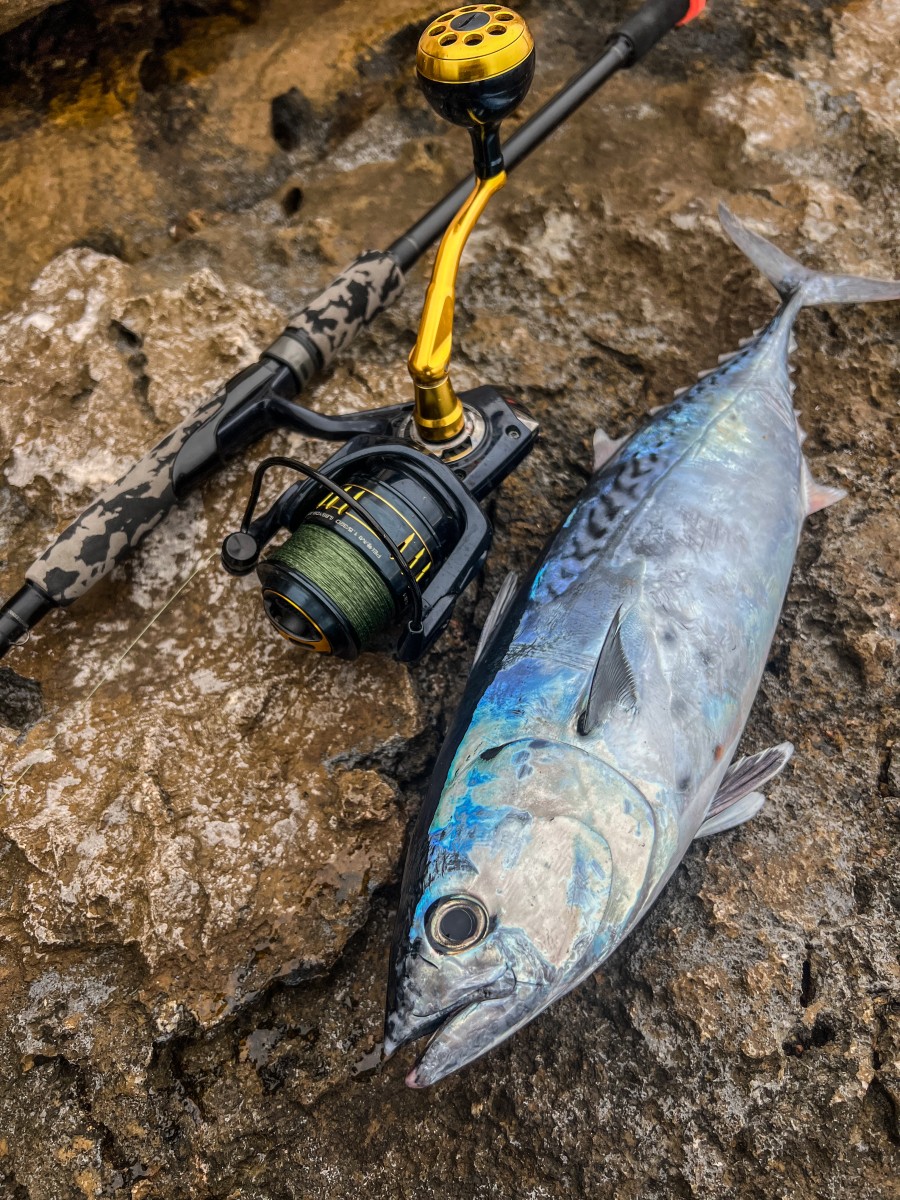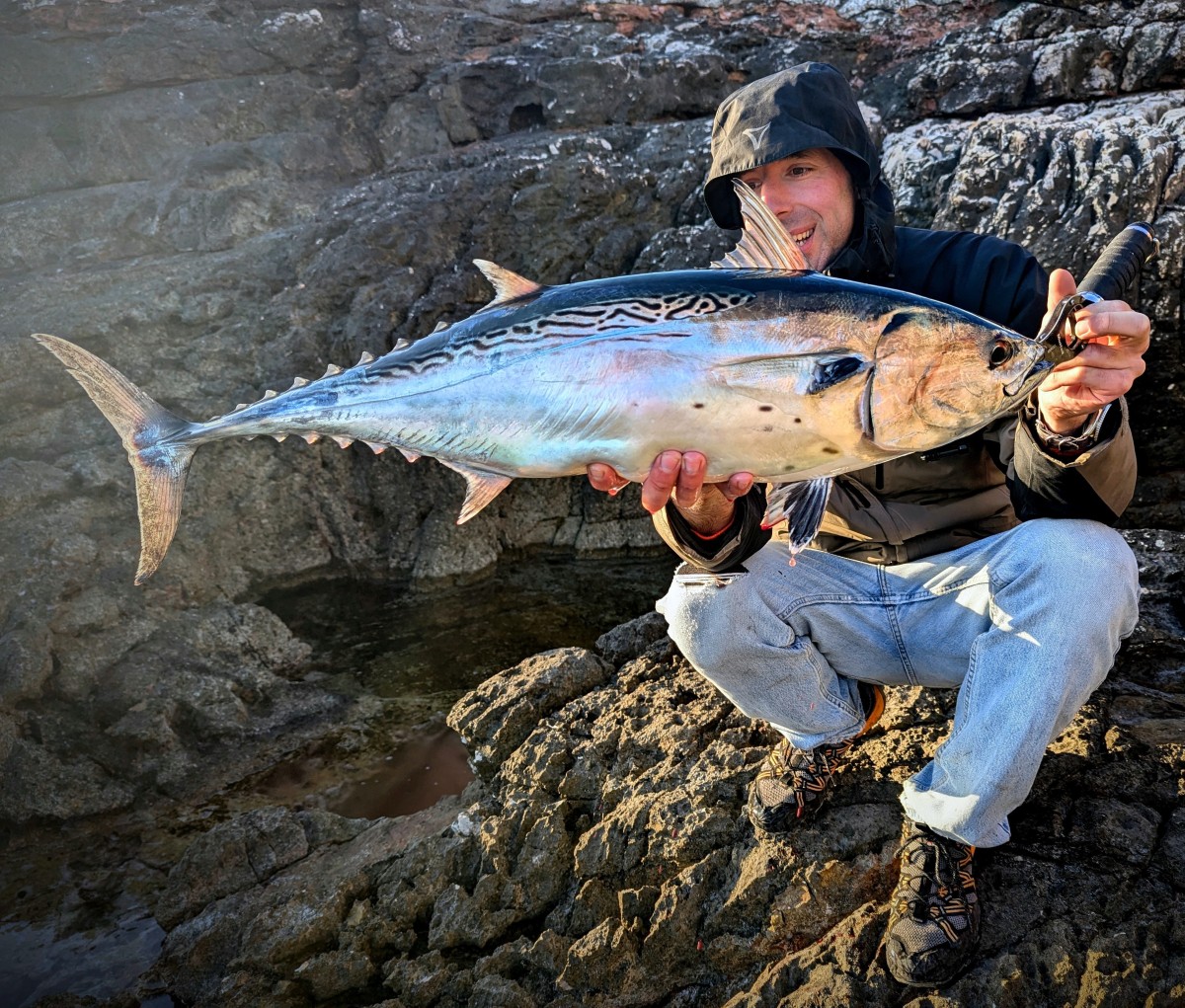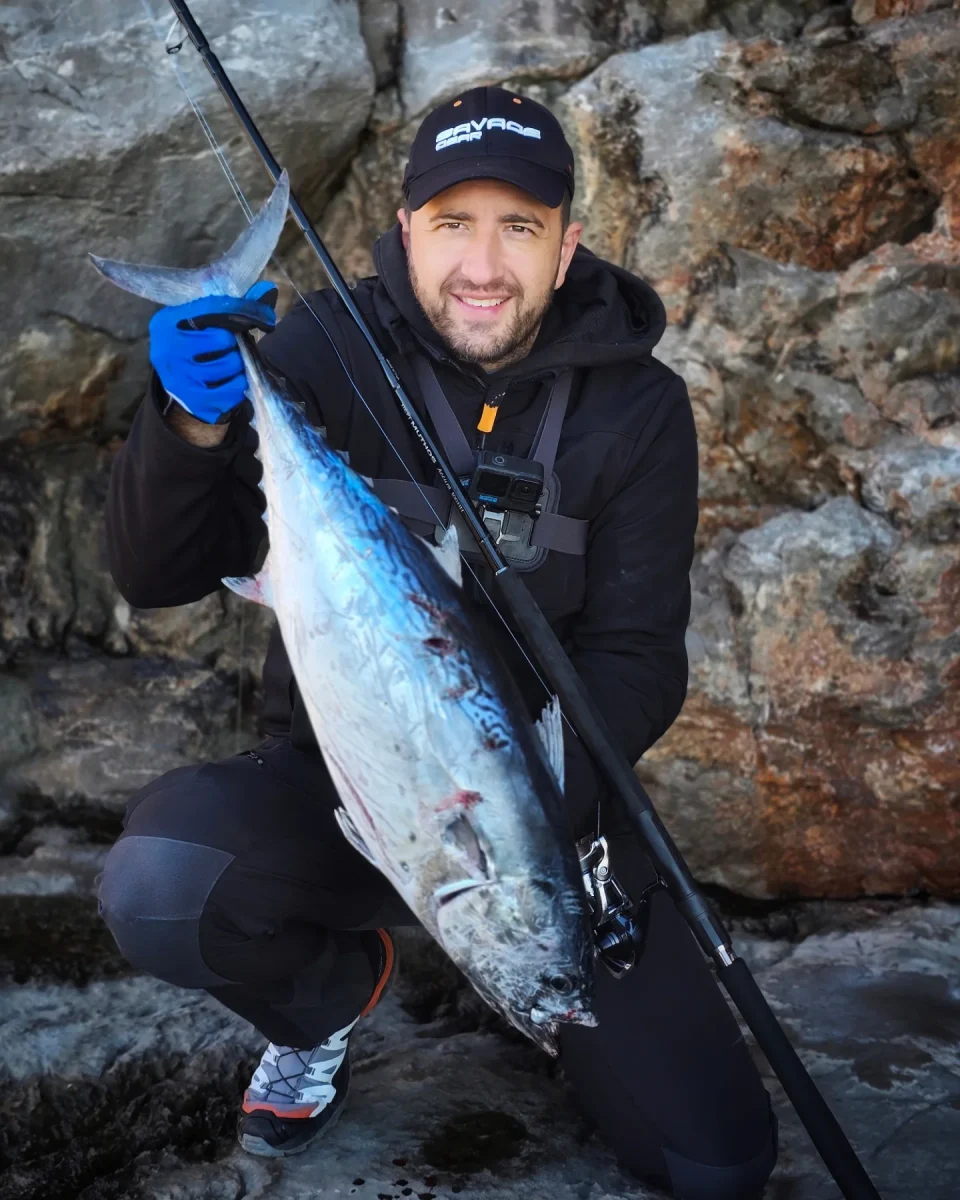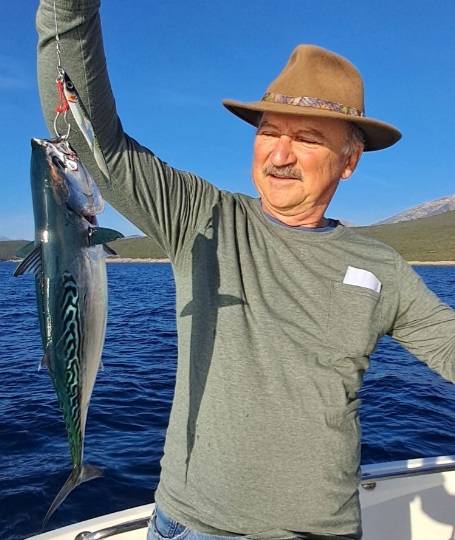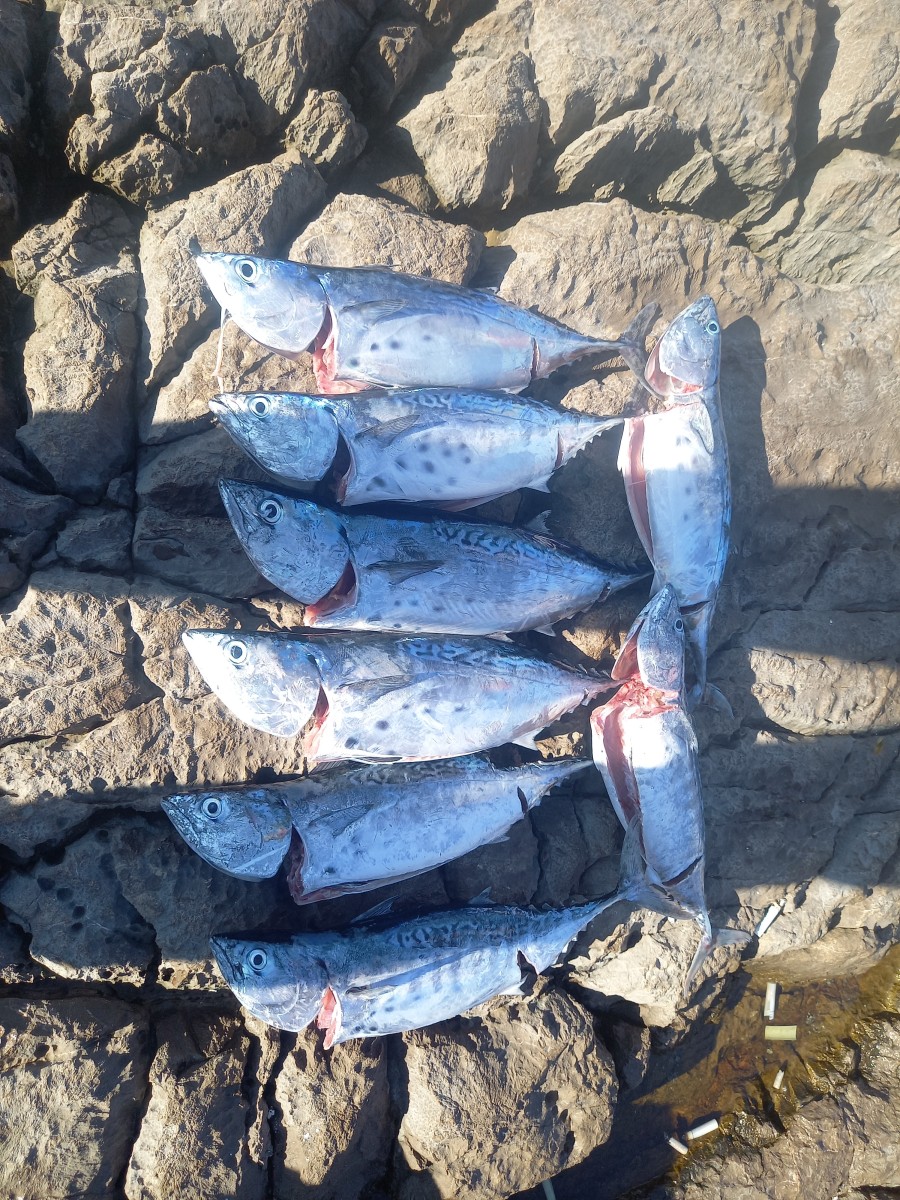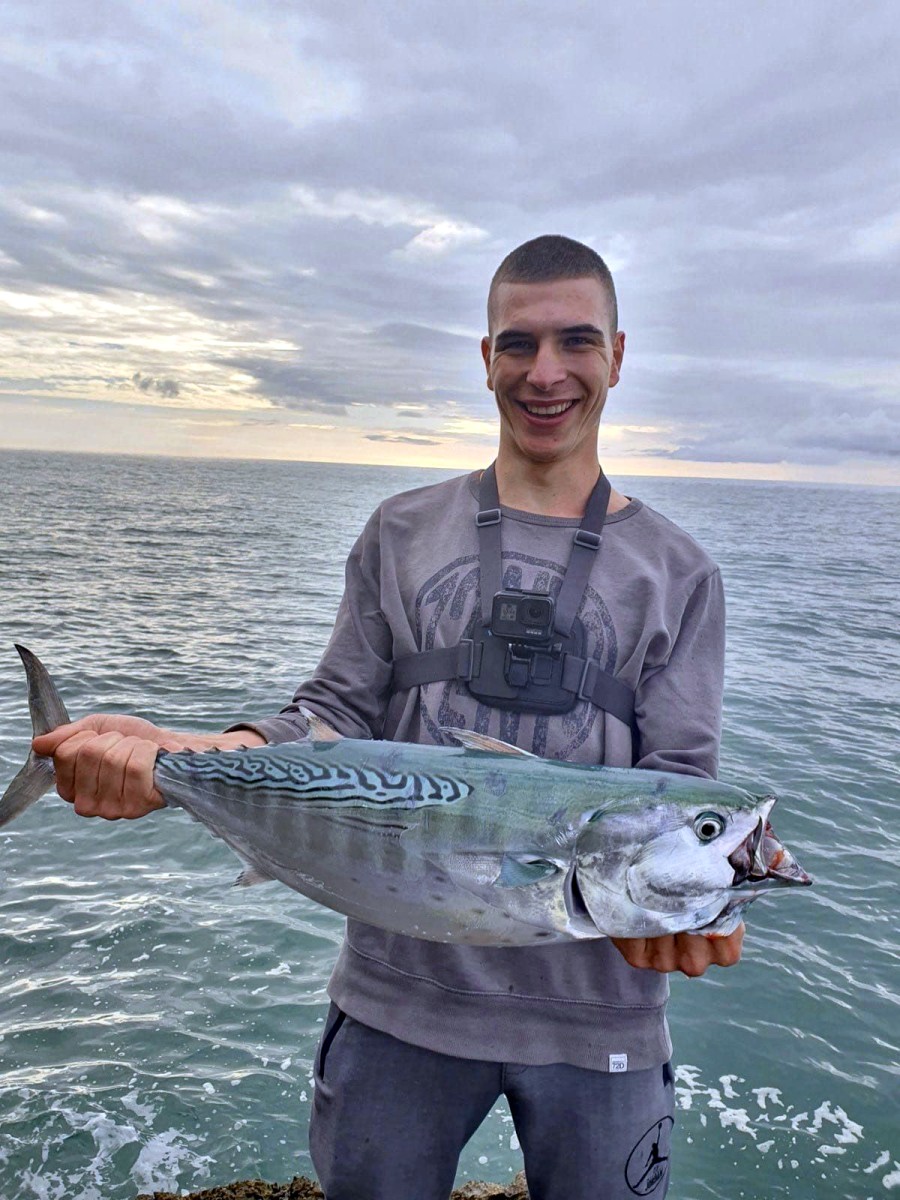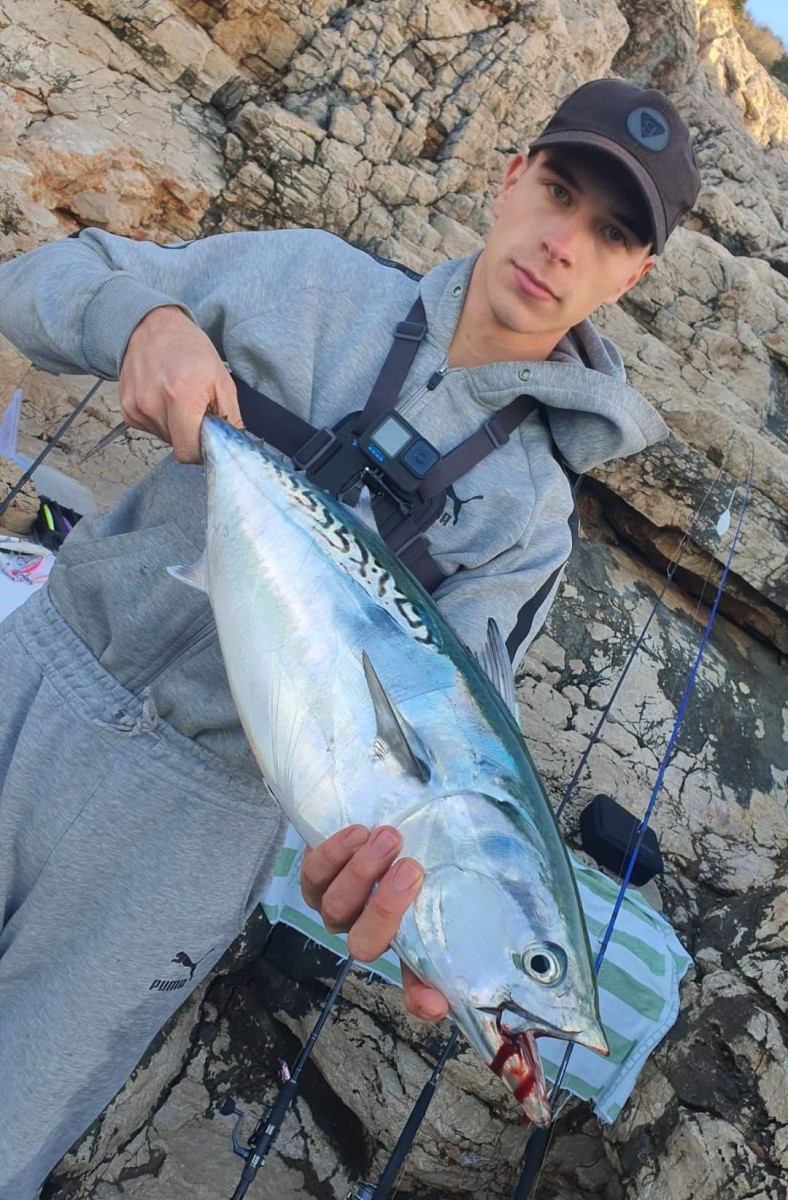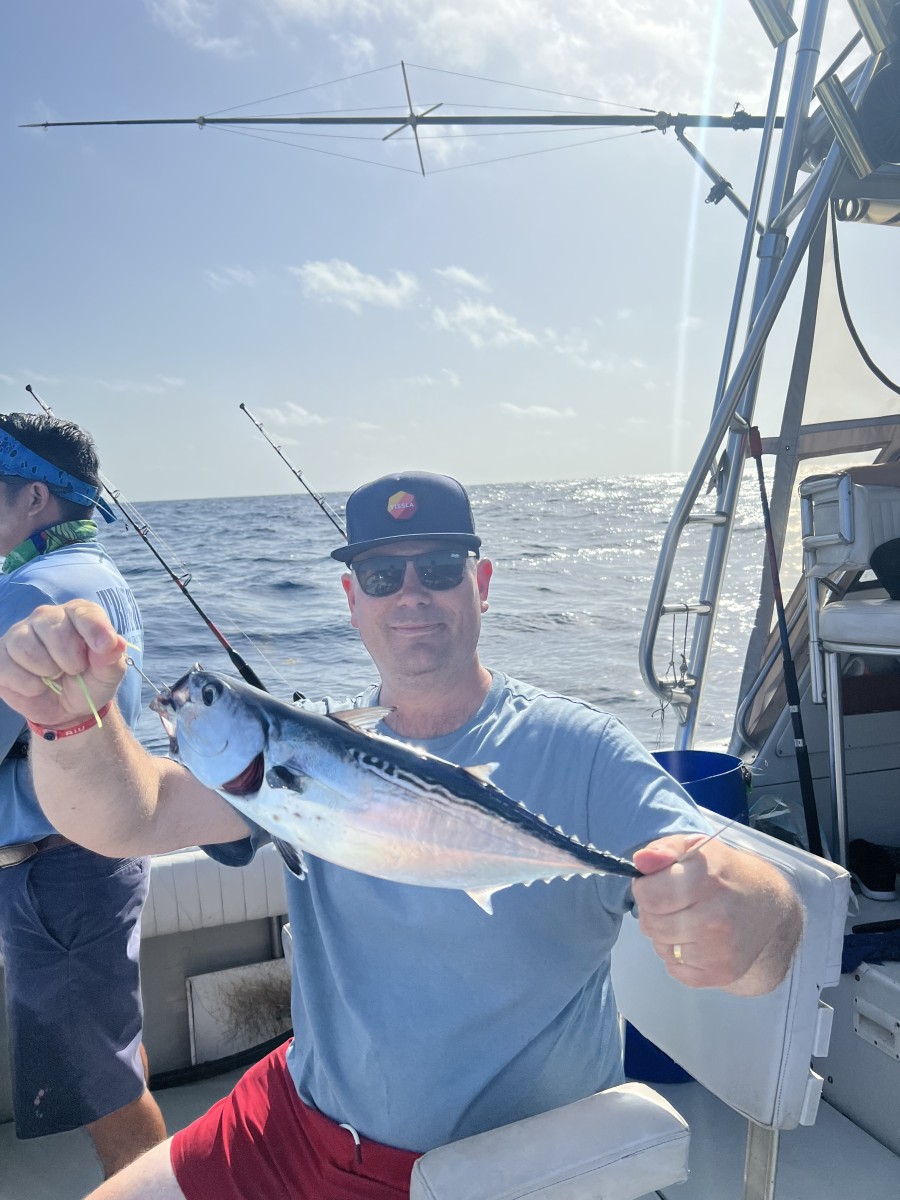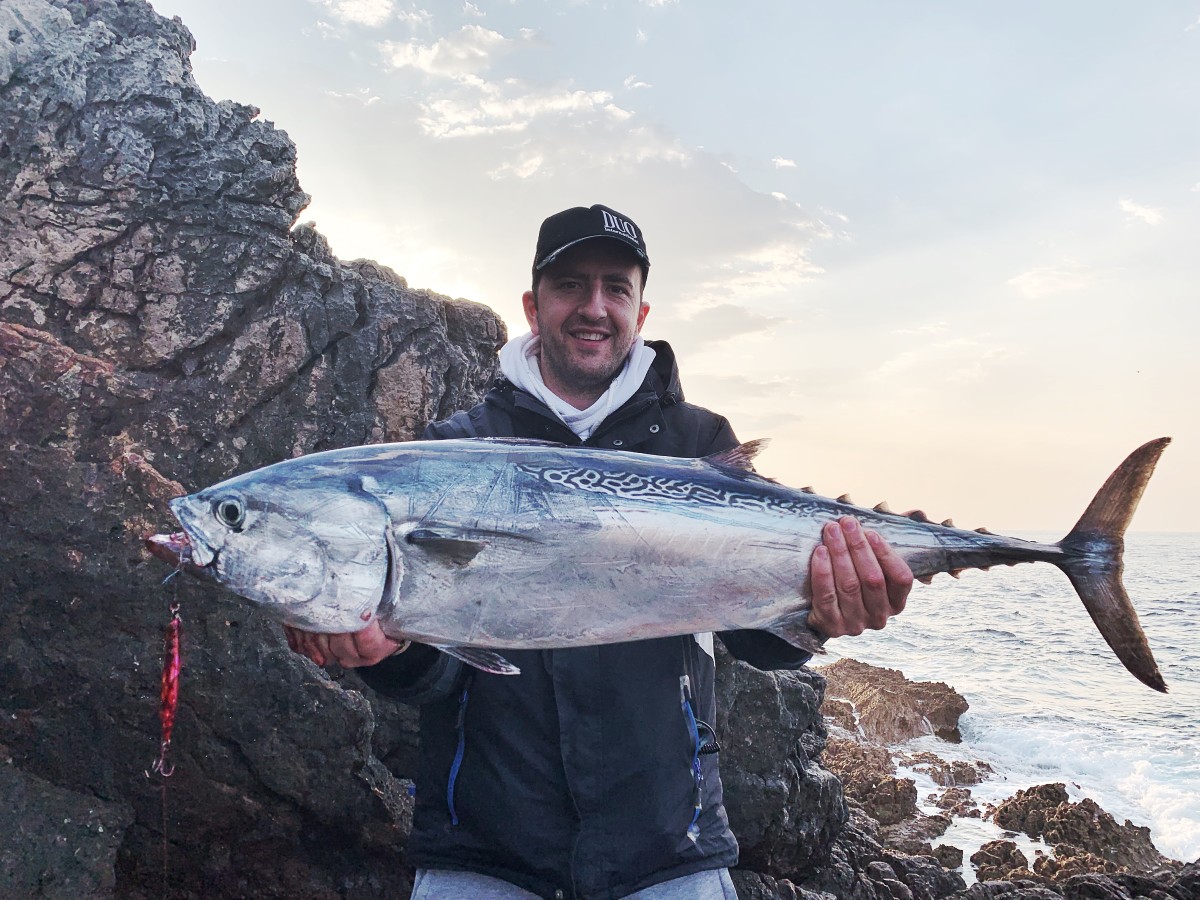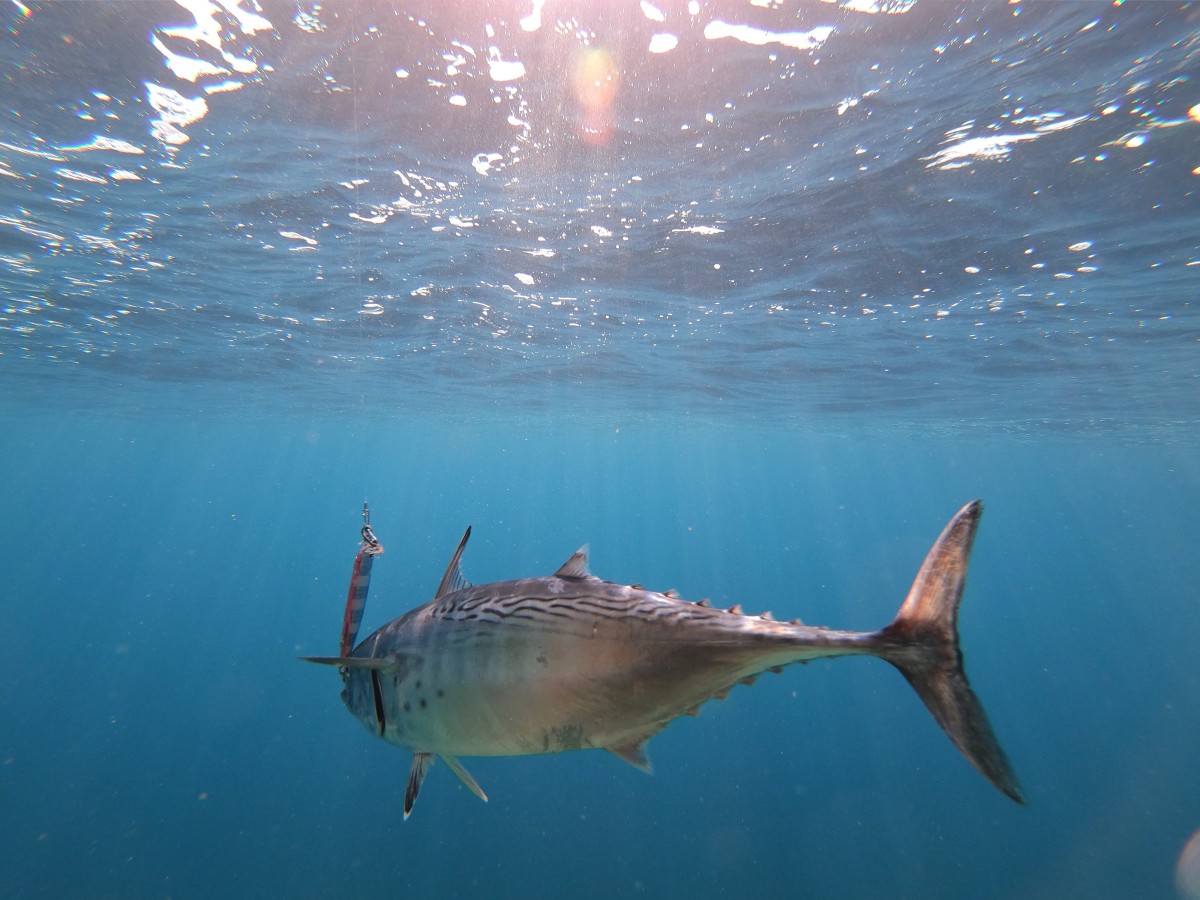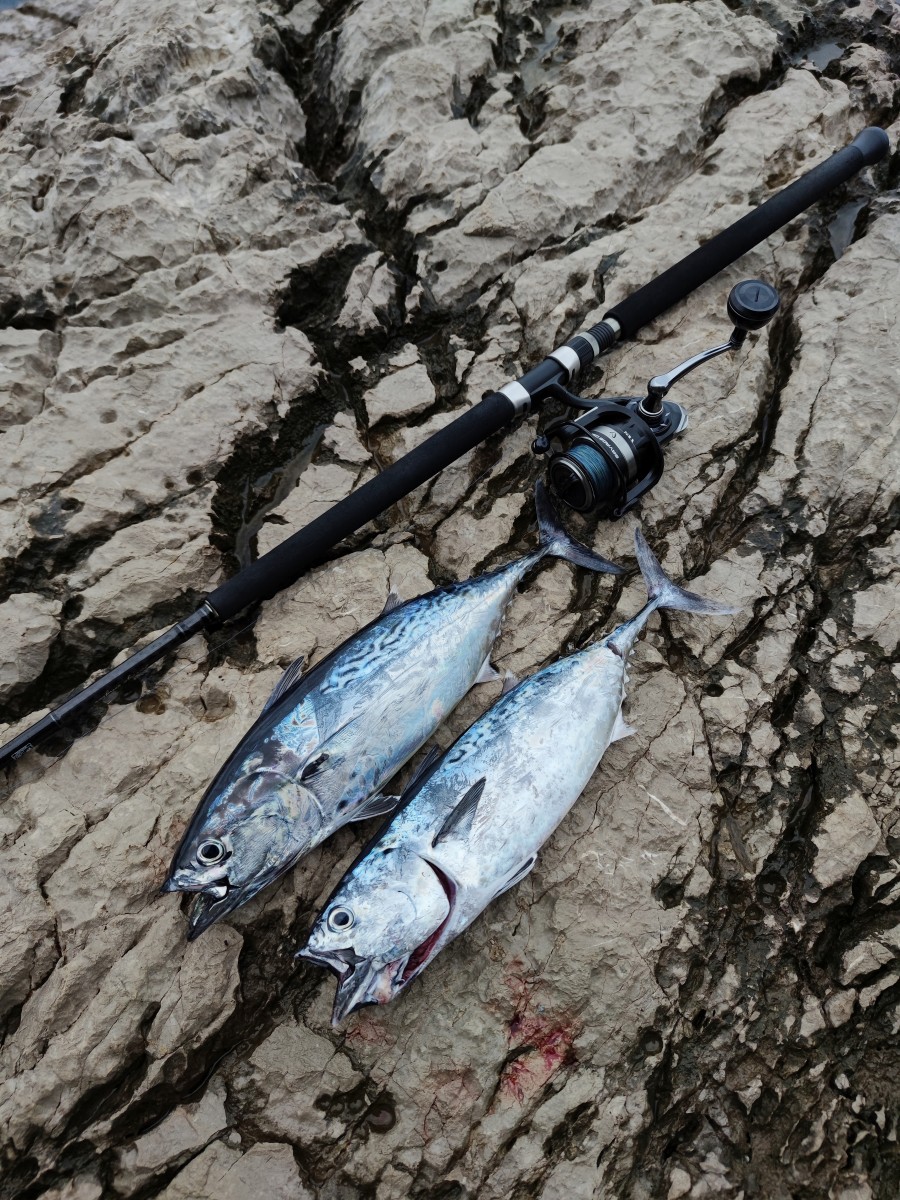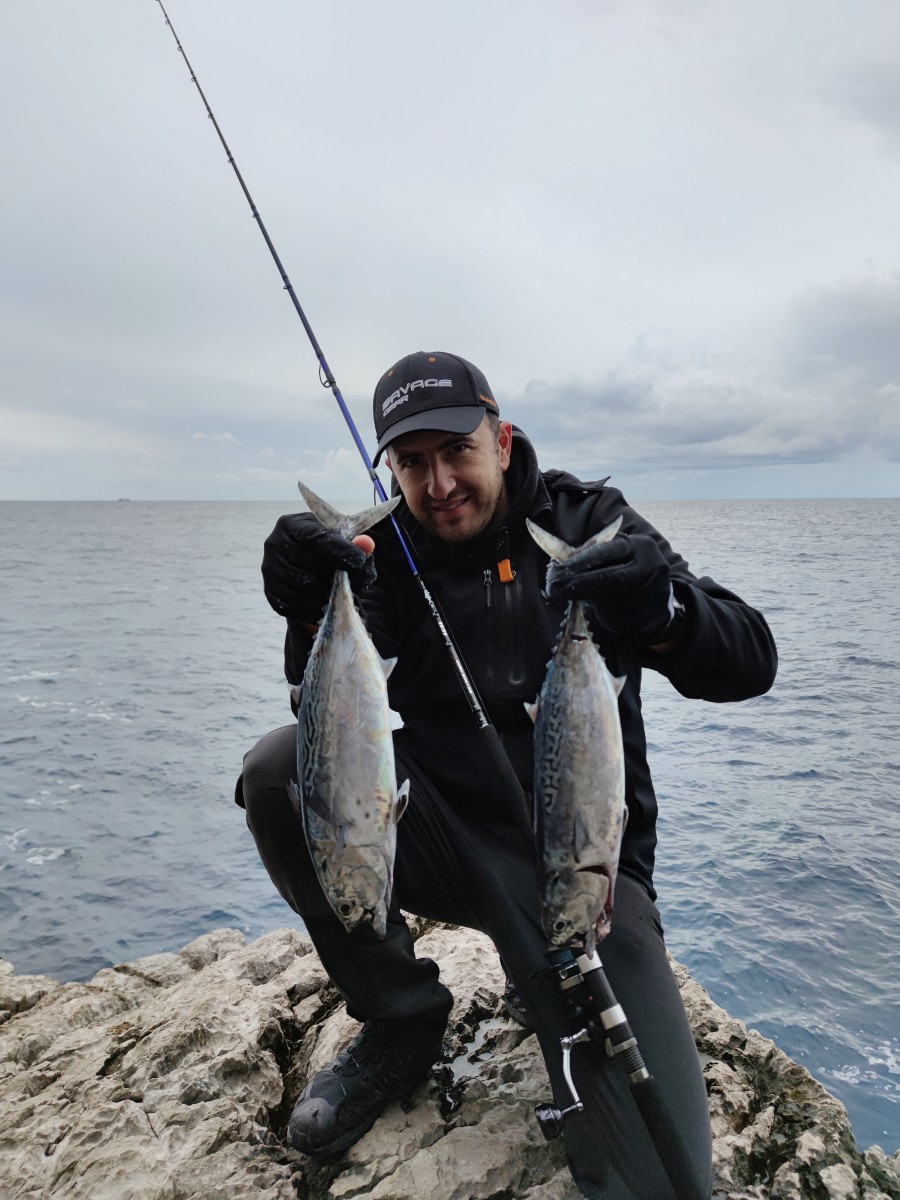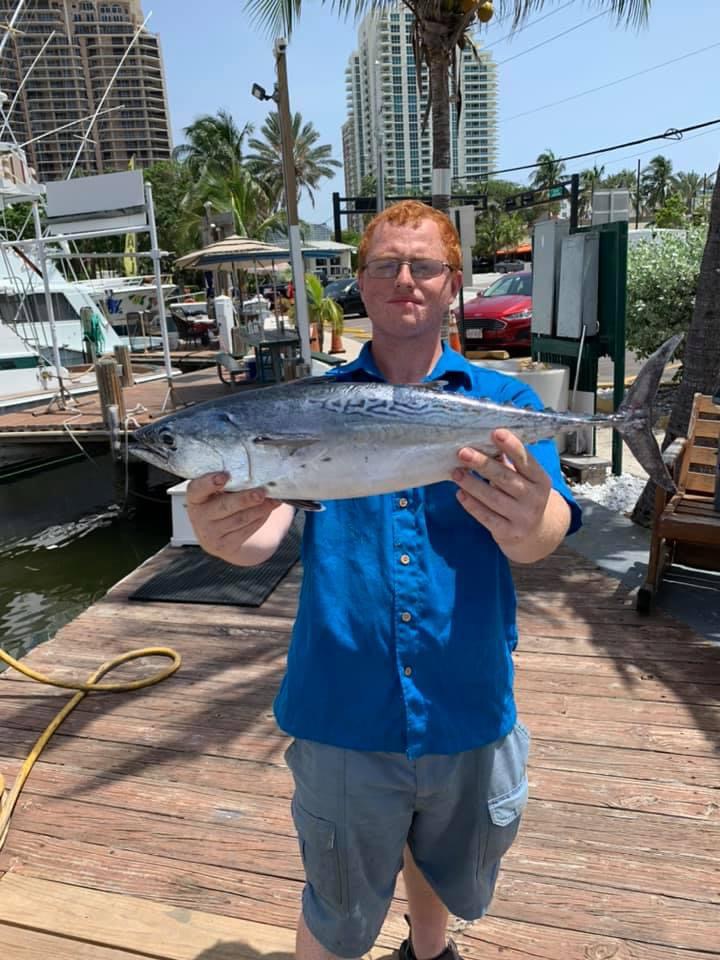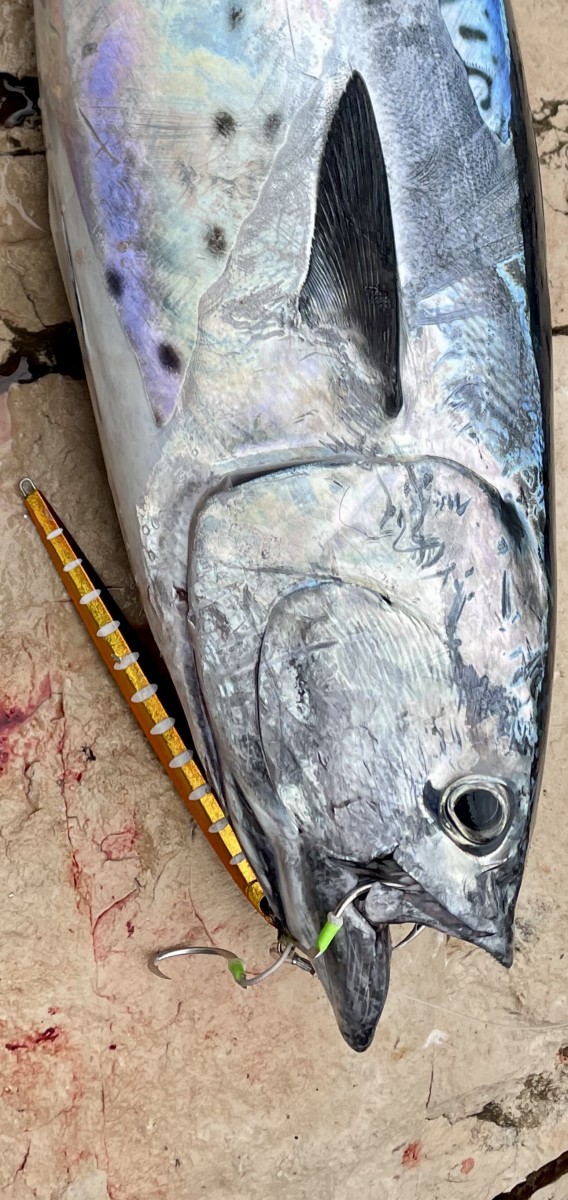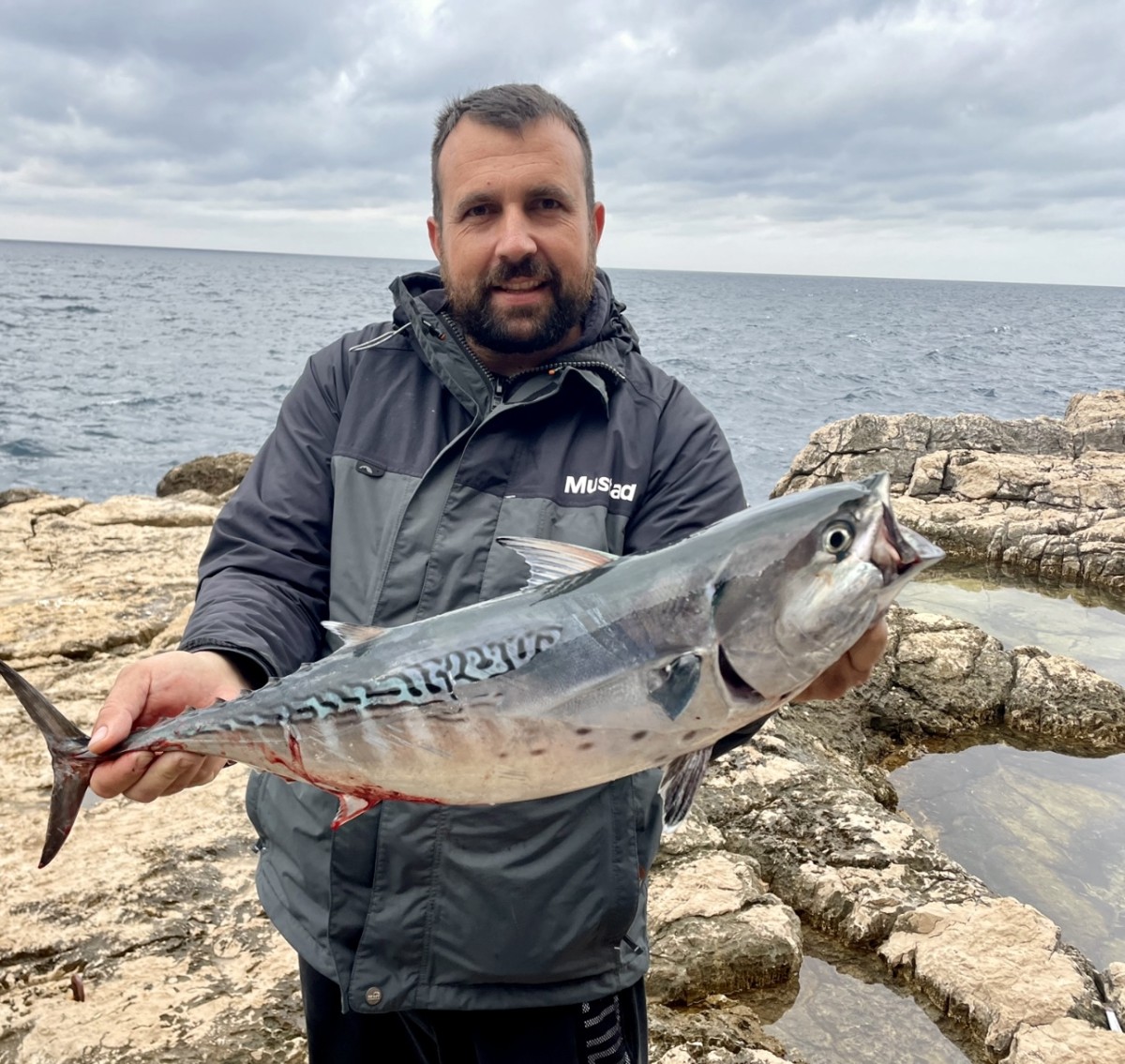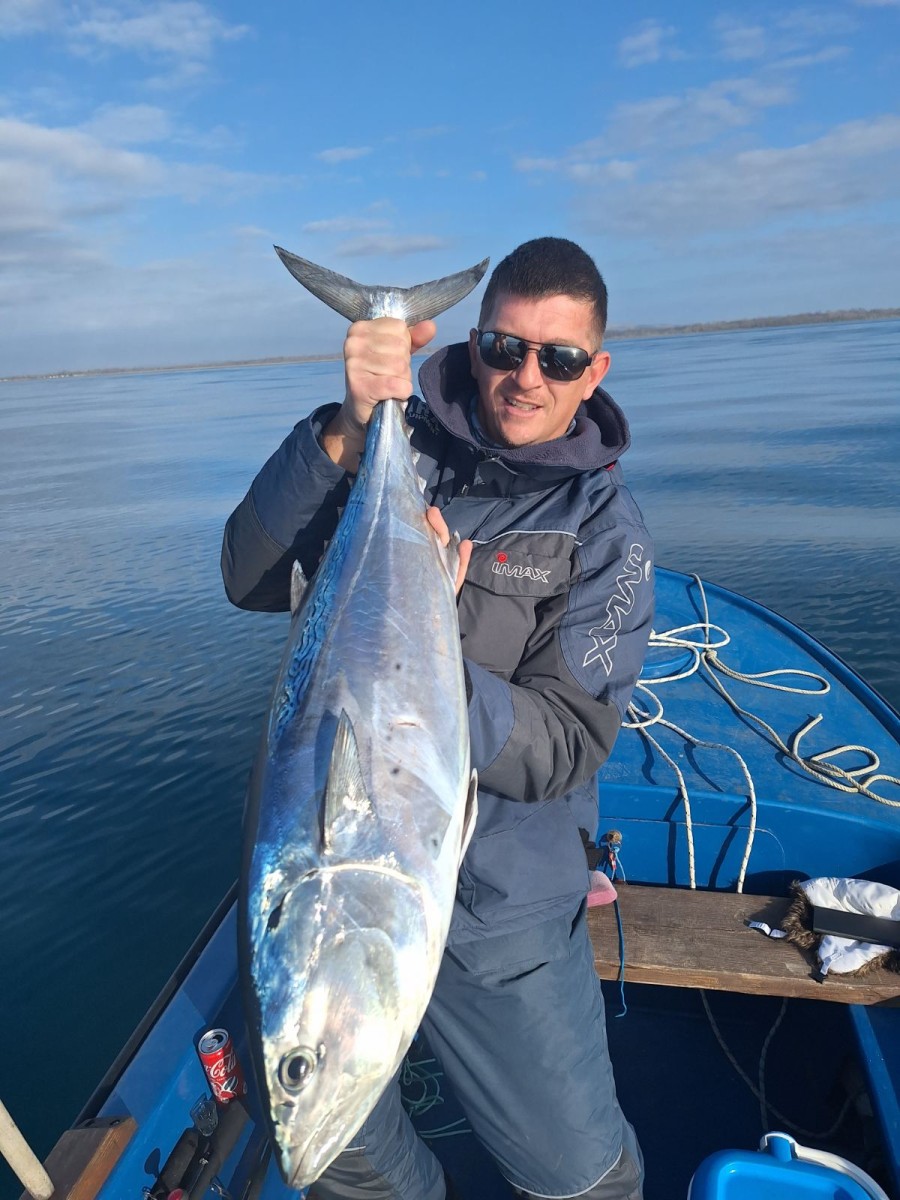Little tunny
(Euthynnus alletteratus)
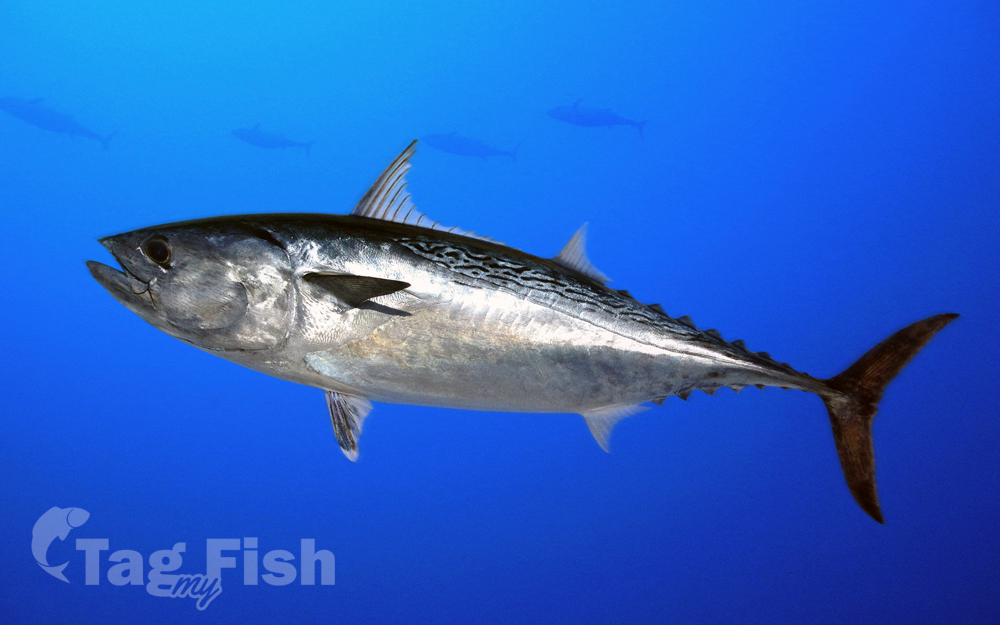
Classification
General data
The little tunny (Euthynnus alletteratus) is the most common tuna in the Atlantic Ocean. It is found in warm temperate and tropical waters of the Atlantic and the Mediterranean; in the western Atlantic, it ranges from Brazil to the New England states. It is found regularly in offshore and inshore waters and is classified as a highly migratory species. Occurring in large schools and weighing up to 36 lb, it is one of the smaller members of the tuna family (Scombridae).
The little tunny is small in body size compared to other tuna species. It has a compact and streamlined body built to facilitate bursts of speed, as well as endurance while swimming. Its torpedo-shaped, robust body is made for powerful swimming. It has a large mouth with rigid jaws and a slightly protruding lower jaw, with a single row of small, inwardly curved, cone-shaped teeth on the palatines. Teeth are absent on the vomer, the small bone in the roof of the mouth, and the tongue has two longitudinal ridges.
The snout is shorter than the rest of the head. The little tunny has a dorsal fin with 10 to 15 tall, descending spines, as well as a much smaller second dorsal fin followed by eight finlets. At the base, the two dorsal fins are separated by a small interspace. The anal fin has 11 to 15 slightly defined rays, and is followed by seven finlets.
The pectoral fins are short and do not reach the end of the first dorsal fin and are joined to the pelvic fins by interpelvic processes. There are 37-45 gill rakers, bony projections off the gills, on the first arch. There are no scales on the body of the little tunny except along the lateral line and on the corselet: a thick band of scales circling the body.
The coloration of the little tunny is typically metallic blue or blue-green with dark, wavy stripes above the lateral line. These \"worm-like\" lines are within a well-marked border that never extends farther forward than the middle of the first dorsal fin. The belly is bright white with three to seven dark, fingerprint-like spots around the pectoral and pelvic fins. The little tunny is commonly confused with the Atlantic bonito because of coloration, but the two fish differ in their color patterns and overall body size.
The little tunny\'s markings allow it to easily be distinguished from similar species. It is often confused with the skipjack tuna, the frigate tuna, the Atlantic bonito, and the bullet tuna. Close relatives also include the kawakawa and the black skipjack. The scattering of dark, fingerprint-like spots between the pectoral and pelvic fins cannot be found on any related Atlantic species. The first dorsal fin of the Atlantic bonito is also lower and sloping. Its lack of teeth on the vomer can set it apart from its close Pacific relatives, the kawakawa and the black skipjack. The dorsal fins of the bullet and frigate mackerel are set apart. Unlike the little tunny, the skipjack tuna lacks markings on the back and has broad, straight stripes on the underside.
The little tunny reaches a maximum weight of 12 kg (26 lb) in the Mediterranean, and averages about 7 kg (15 lb) through its entire range. Its maximum fork length (distance from the tip of the snout to the fork of the tail) in the Mediterranean is about 100 cm (39 in) and in the Atlantic is about a 90 cm (35 in). Average fork length for an adult fish throughout the entire range is about 85 cm (33 in). Some fish may reach a length of 100 cm (39 in) or more, but most commonly they are around 64 cm (25 in). The largest little tunny on record is 120 cm (47 in) and 17 kg (37 lb). Females reach sexual maturity at 27 to 37 cm (11–15 in) in fork length, while males mature at about 40 cm (16 in).[6]
The little tunny has some anatomical variations when compared to other species of Euthynnus. E. alletteratus lacks a swim bladder, like most other tuna, so it must constantly keep moving to stay afloat. The pectoral fins are crucial to the little tunny in maintaining its position in the water column. Its liver is very disproportionate, with the right lobe much longer than the left or middle lobes. The stomach of the little tunny is a long sac that stretches almost the entire length of its body. The intestinal tract is fairly short, coming from the left and right sides of the stomach, and extending without looping down the length of its body. The different sections are characterized by their diameter and color. The ventral vertebral column of the little tunny has unique trelliswork, which is important to its family (Scombridae). Divided haemapophyses, or parts of the vertebrate forming a long canal, enclose the large ventral blood vessel.

